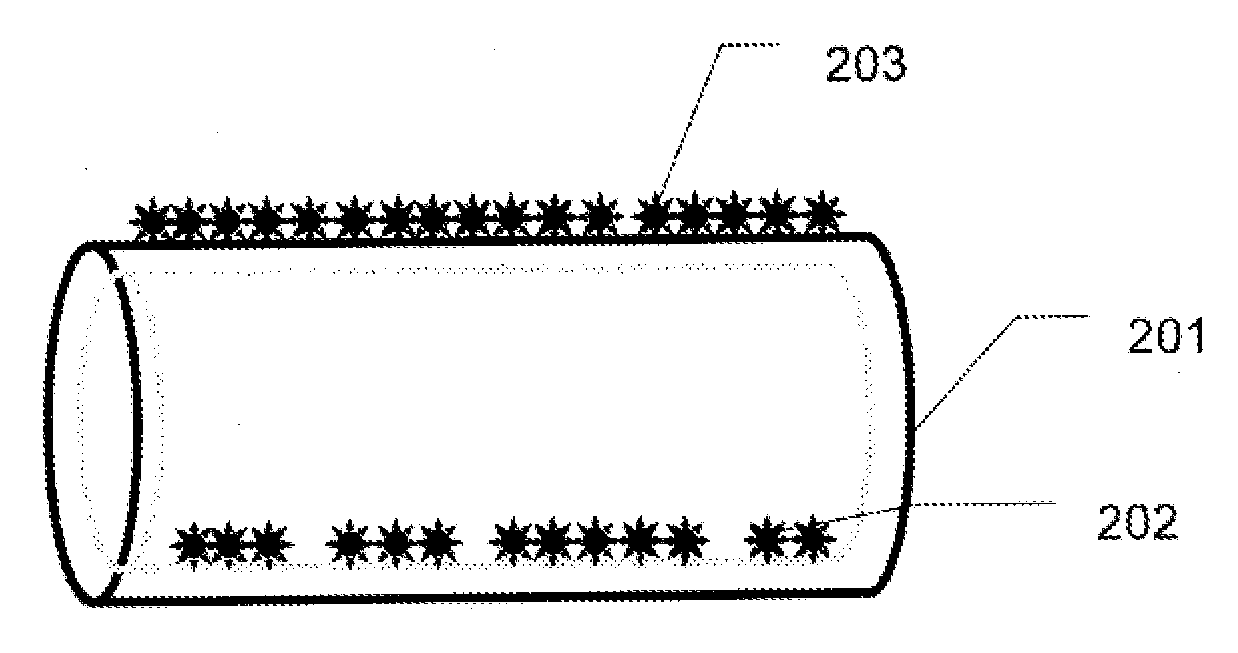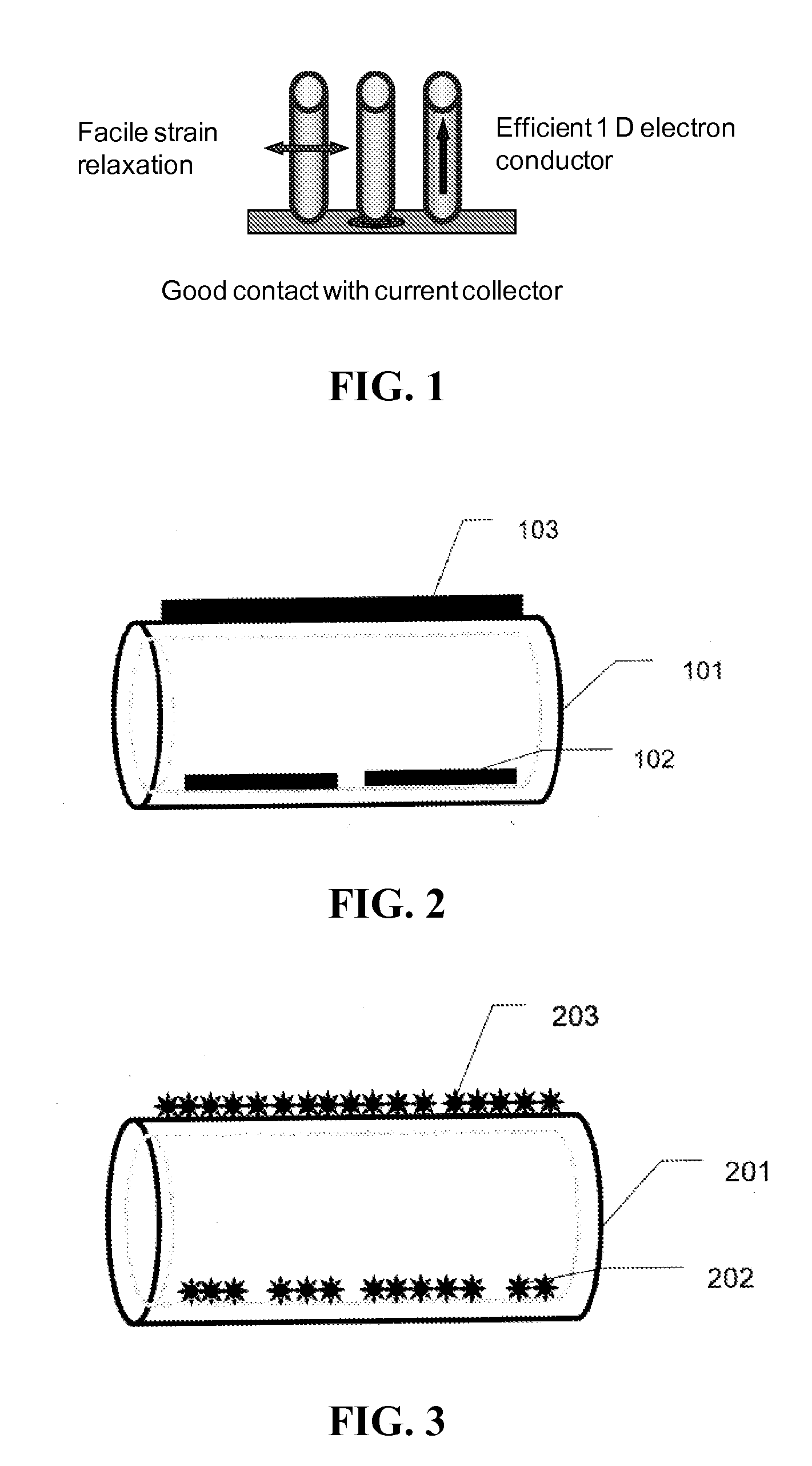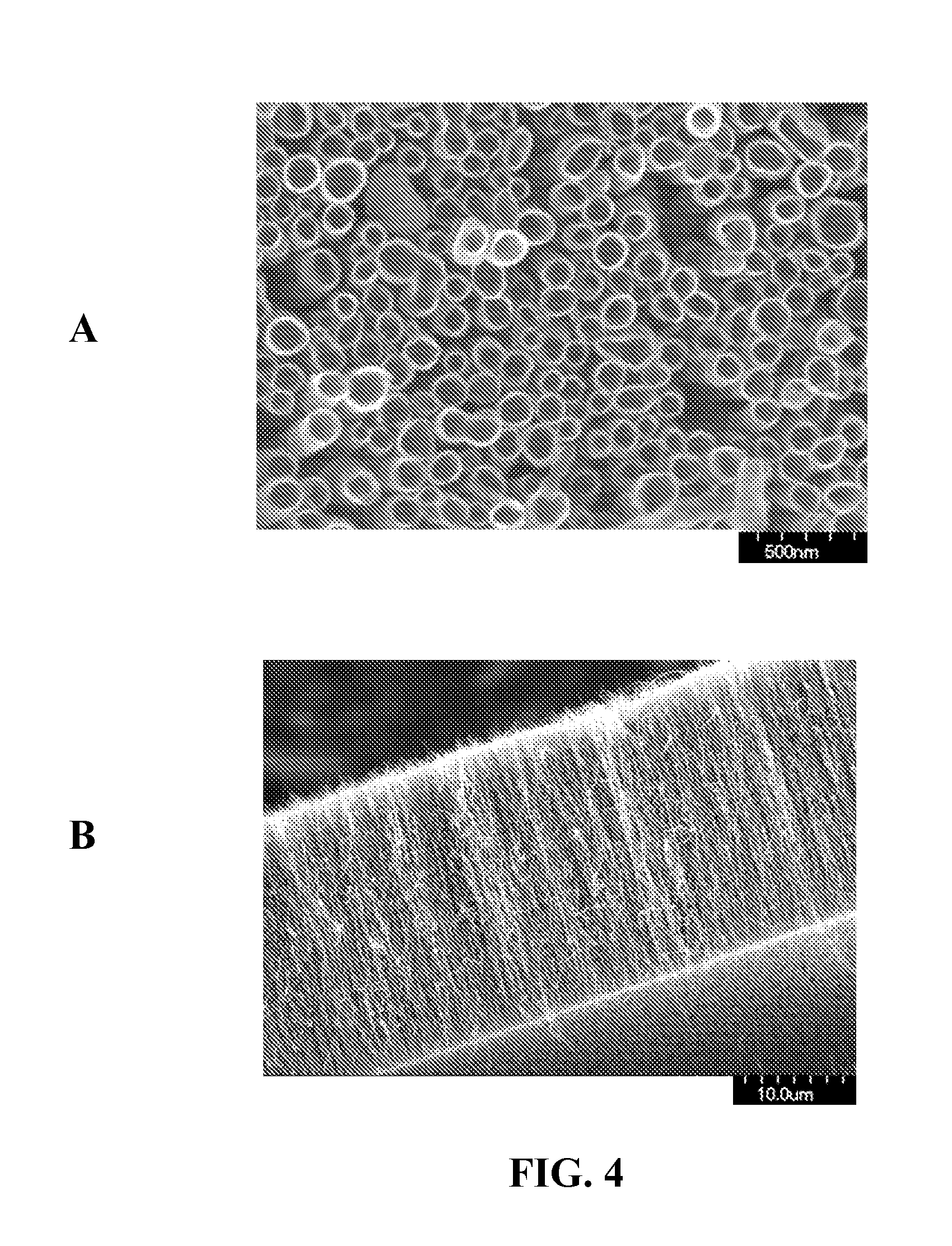Nanotube composite anode materials suitable for lithium ion battery applications
a lithium ion battery and composite material technology, applied in the field of nanotube composite materials, can solve the problems of % increase in total mah/g capacity, substantial technical challenges to use this battery for automobile applications, and efforts that have approached their limits in terms of improving battery capacity
- Summary
- Abstract
- Description
- Claims
- Application Information
AI Technical Summary
Benefits of technology
Problems solved by technology
Method used
Image
Examples
example 1
Synthesis of Carbon Nanotubes
Carbon nanotubes (CNT) can be synthesized according to procedures that are known in the art. For example, carbon nanotubes were prepared by a chemical vapor deposition process inside a quartz tube inserted through a low-temperature heating section (Zone I, about 200° C.) and a high-temperature heating section (Zones II, about 750° C.). About 0.34 g of ferrocene was dissolved in about 22.63 mL of xylene and used as the precursor for the CNT synthesis. The solution was injected into and vaporized in Zone I. A hydrogen and argon mixture (60 mL / min and 90 mL / min, respectively) was used to transport the vaporized ferrocene and xylene mixture from Zone Ito Zone II. The CNTs were formed over a polished quartz plate inside Zone II. After about 30 minutes, the solution injection was stopped and the furnaces heating Zones I and II were cooled down to room temperature with the argon and hydrogen gas mixture still flowing. FIG. 4 shows SEM images of a typical ACNT m...
example 2
Conducting Polymer Nanotubes
Conductive polymer nanotubes have been fabricated by various methods known in the art. Such methods can be divided into at least three categories: template (or hard template) methods, pseudotemplate (or soft template) methods, and template-free methods. Template methods have been widely used because of their simplicity, versatility, and controllability. The hard template is usually a thin porous film of aluminum oxide or polycarbonate. Different kinds of conducting polymers have been deposited in the cylindrical pores of such films to form nanotubes or nanowires. The deposition has been performed by methods such as pressure injection, vapor deposition, chemical deposition, and electrodeposition; the last two of these methods being the most popular in recent research. For purposes of illustration, FIG. 5 provides SEM and TEM images of poly(3,4-ethylenedioxythiophene) nanotube material (from Cho, S. I. and Lee, S. B., 2008. “Fast Electrochemistry of Conduct...
example 3
Surface Modification of Aligned Carbon Nanotubes
The as-synthesized ACNTs were steam oxidized to introduce a surface functional group in order to deposit a Pt catalyst on the surface. This steam oxidation was achieved in the same CVD reactor as was used to synthesize the ACNT according to Example 1, using the following procedure: Zone I and Zone II were heated and kept at about 500° C. and about 800° C., respectively. Deionized water was injected into the quartz tube at the middle sites of Zone I at the rate of about 0.225 mL / min to generate steam. Flowing argon (about 140 mL / min) was used to carry the steam to Zone II and react with ACNTs that were synthesized in the reactor using the CVD process described in Example 1. The water injection was continued for about 50 minutes, after which time the heating was terminated and the contents of the reactor were cooled to room temperature with flowing argon.
PUM
 Login to View More
Login to View More Abstract
Description
Claims
Application Information
 Login to View More
Login to View More - R&D
- Intellectual Property
- Life Sciences
- Materials
- Tech Scout
- Unparalleled Data Quality
- Higher Quality Content
- 60% Fewer Hallucinations
Browse by: Latest US Patents, China's latest patents, Technical Efficacy Thesaurus, Application Domain, Technology Topic, Popular Technical Reports.
© 2025 PatSnap. All rights reserved.Legal|Privacy policy|Modern Slavery Act Transparency Statement|Sitemap|About US| Contact US: help@patsnap.com



